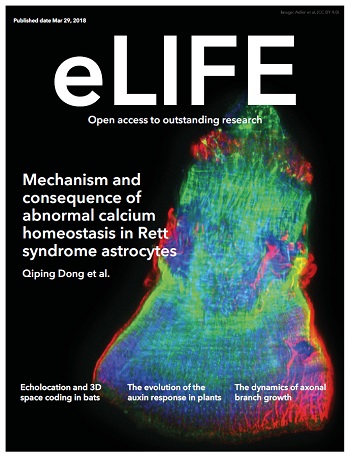小鼠固有活化浆细胞树突状细胞的淋巴来源
IF 6.4
1区 生物学
Q1 BIOLOGY
引用次数: 0
摘要
我们发现了一种新型小鼠浆细胞树突状细胞(pDC)系,这种细胞系来源于普通淋巴祖细胞(CLPs),依赖于 Bcl11a 的表达。这些由 CLP 衍生的 pDC(我们称之为 "B-pDC")具有独特的基因表达谱,其中包括 B 细胞标志基因,这些基因通常不在传统 pDC 中表达。尽管 B-pDCs 表达大多数经典的 pDC 标记,如 SIGLEC-H 和 PDCA1,但它们缺乏 IFN-α 分泌,表现出独特的炎症特征。在功能上,B-pDC 与典型 pDC 相比,在 Toll 样受体 9(TLR9)参与后能更强有力地诱导 T 细胞增殖。B-pDCs与另一个同质的髓源性pDCs亚群一起显示出细胞表面受体酪氨酸激酶AXL水平的升高,在功能和转录特征上与人类AXL+过渡性DCs相似。因此,小鼠 B-pDCs 代表了一种表型和功能上与众不同的 CLP 派生 DC 系,专门用于 T 细胞活化,以前未在小鼠中描述过。本文章由计算机程序翻译,如有差异,请以英文原文为准。
Lymphoid origin of intrinsically activated plasmacytoid dendritic cells in mice
We identified a novel mouse plasmacytoid dendritic cell (pDC) lineage derived from the common lymphoid progenitors (CLPs) that is dependent on expression of Bcl11a. These CLP-derived pDCs, which we refer to as ‘B-pDCs’, have a unique gene expression profile that includes hallmark B cell genes, normally not expressed in conventional pDCs. Despite expressing most classical pDC markers such as SIGLEC-H and PDCA1, B-pDCs lack IFN-α secretion, exhibiting a distinct inflammatory profile. Functionally, B-pDCs induce T cell proliferation more robustly than canonical pDCs following Toll-like receptor 9 (TLR9) engagement. B-pDCs, along with another homogeneous subpopulation of myeloid-derived pDCs, display elevated levels of the cell surface receptor tyrosine kinase AXL, mirroring human AXL+ transitional DCs in function and transcriptional profile. Murine B-pDCs therefore represent a phenotypically and functionally distinct CLP-derived DC lineage specialized in T cell activation and previously not described in mice.
求助全文
通过发布文献求助,成功后即可免费获取论文全文。
去求助
来源期刊

eLife
BIOLOGY-
CiteScore
12.90
自引率
3.90%
发文量
3122
审稿时长
17 weeks
期刊介绍:
eLife is a distinguished, not-for-profit, peer-reviewed open access scientific journal that specializes in the fields of biomedical and life sciences. eLife is known for its selective publication process, which includes a variety of article types such as:
Research Articles: Detailed reports of original research findings.
Short Reports: Concise presentations of significant findings that do not warrant a full-length research article.
Tools and Resources: Descriptions of new tools, technologies, or resources that facilitate scientific research.
Research Advances: Brief reports on significant scientific advancements that have immediate implications for the field.
Scientific Correspondence: Short communications that comment on or provide additional information related to published articles.
Review Articles: Comprehensive overviews of a specific topic or field within the life sciences.
 求助内容:
求助内容: 应助结果提醒方式:
应助结果提醒方式:


